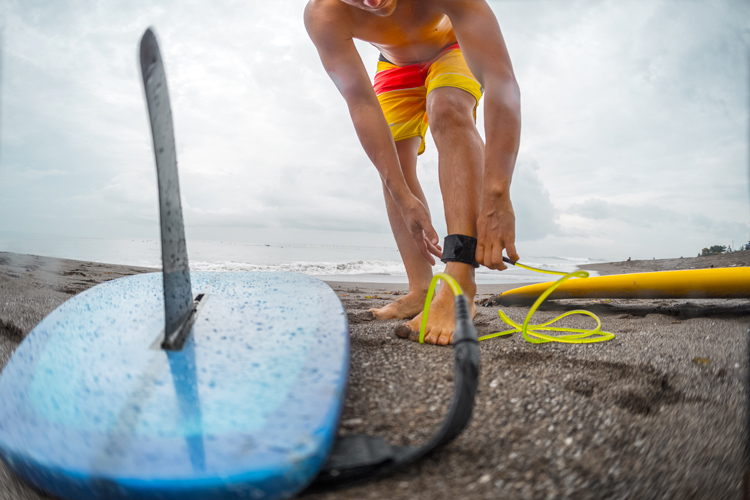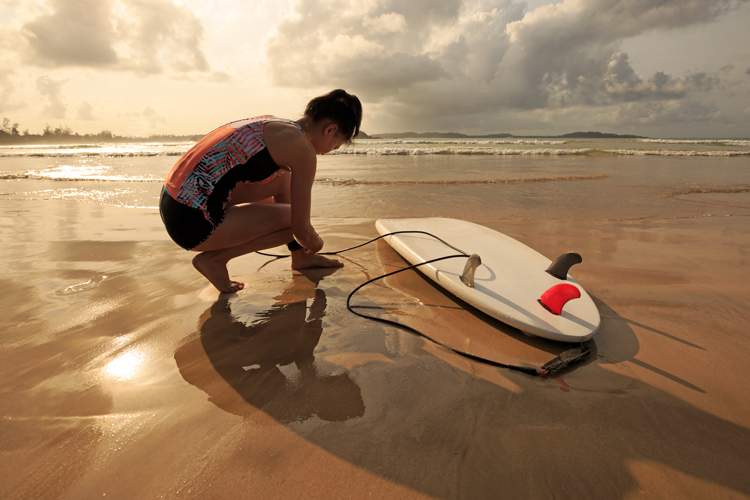The surfboard leash is one of surfing's greatest inventions, and it only appeared in the lineups in the early 1970s.
The so-called leg rope saves a lot of effort whenever you fall off the board or you have to let go of it for any reason.
If you're wearing a leash, you will never have to swim all the way back to the beach to retrieve your surfboard because it is always attached to your ankle.
Today, it is unanimous that wearing a leash is mandatory, even though there will always be those who prefer to go leashless in specific situations.
The surf leash is a practical and safe piece of equipment that keeps the rider connected to his most precious item - the surfboard - so it's essential to make the right choice when buying it.
Without the flexible urethane cord, a surfboard can become a deadly weapon, not only for the owner of the board but also for other fellow wave riders.
There are three main variables you must consider when buying a leash for a surfboard, longboard, or stand-up paddleboard (SUP):
- Length;
- Thickness;
- Surfer's experience;

1. The Length of the Surfboard Leash
Surf shops often display dozens of kook cords. But which size is best for your surfboard? Do you need a shorter or longer leash?
There's a simple rule of thumb for helping you choose the right size for a surf leash - you want your rope to be as long as your surfboard, if not a little bit longer.
Here's a simple leash size chart:
- 5'6'' Surfboard > 5'6'' - 5'8'' Leash;
- 6'2'' Surfboard > 6'2'' - 6'4'' Leash;
- 7' Malibu > 7' - 7'2'' Leash;
- 9' Longboard > 9' - 9'2'' Leash;
- 10'+ SUP > 10' - 10'2'' Leash;
In conclusion, the length of the leash should be equal to or slightly longer than the board you're riding, which means that different boards should be equipped with different leashes.
2. The Thickness of the Surfboard Leash
Thickness means resistance, so if you're surfing big waves or big boards, you should opt for a thicker leash that keeps the surfboard from shooting back in case of a wipeout.
In small wave conditions, an intermediate or advanced surfer can opt for a lighter and thinner rope.
3. The Surfer's Experience
A leash that is much longer than its board can be dangerous, especially if you're a beginner because the board will have a wider radius and may hit more people in case of a wipeout.
On the opposite side of the spectrum, advanced surfers tend to pick shorter leashes to reduce the amount of drag involved and optimize speed.
However, a very short leash can be uncomfortable and will eventually make the board rebound and hit you back fast whenever you fall.
That is why it is important to adapt your cord selection to the control you have of your board.
Finally, remember that, in bigger waves, the leash will gradually increase its length, so make sure to check your equipment and replace it if needed.
Last but not least, always unstrap the leash when you leave the water.
Discover the best surfboard leashes in the world.
